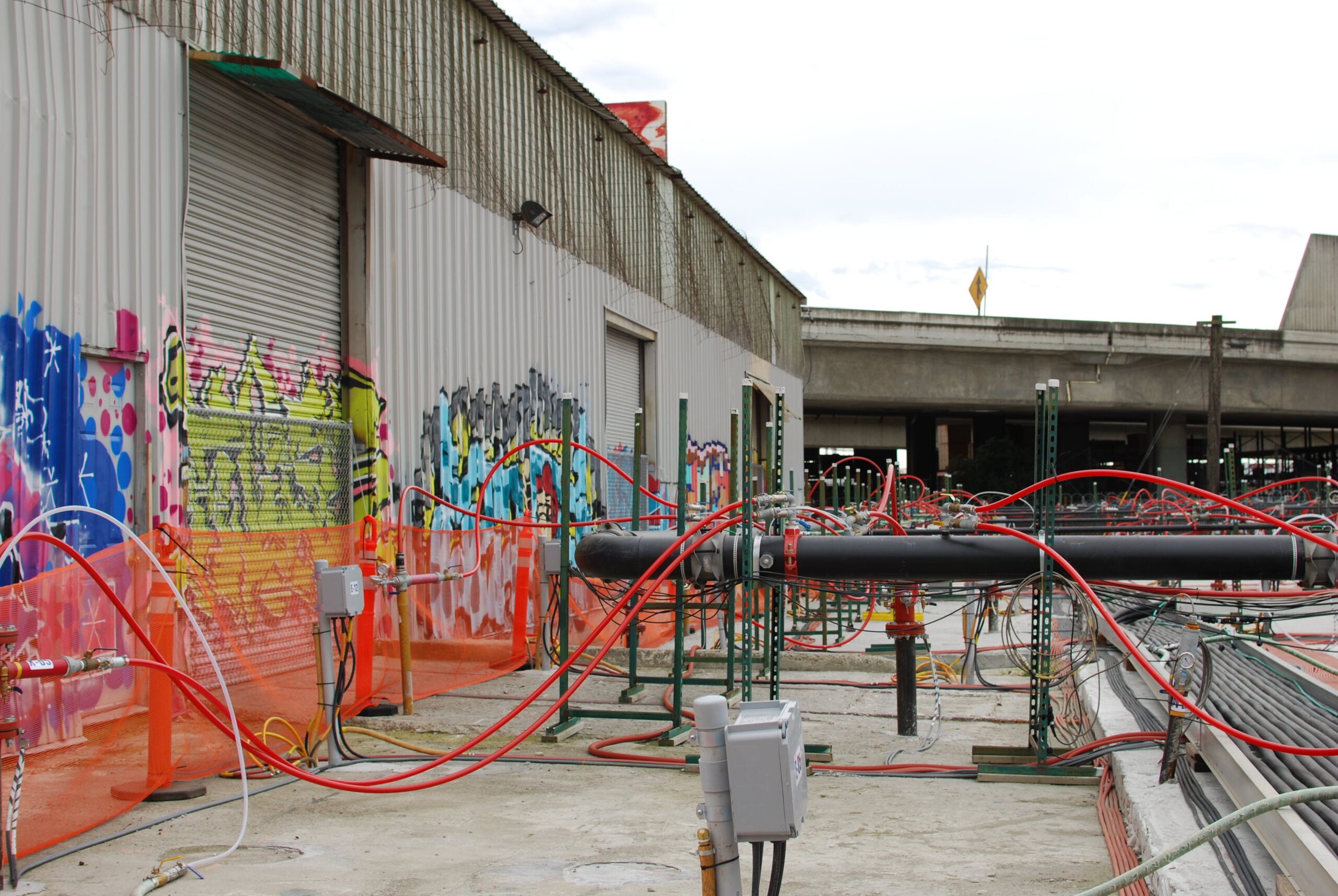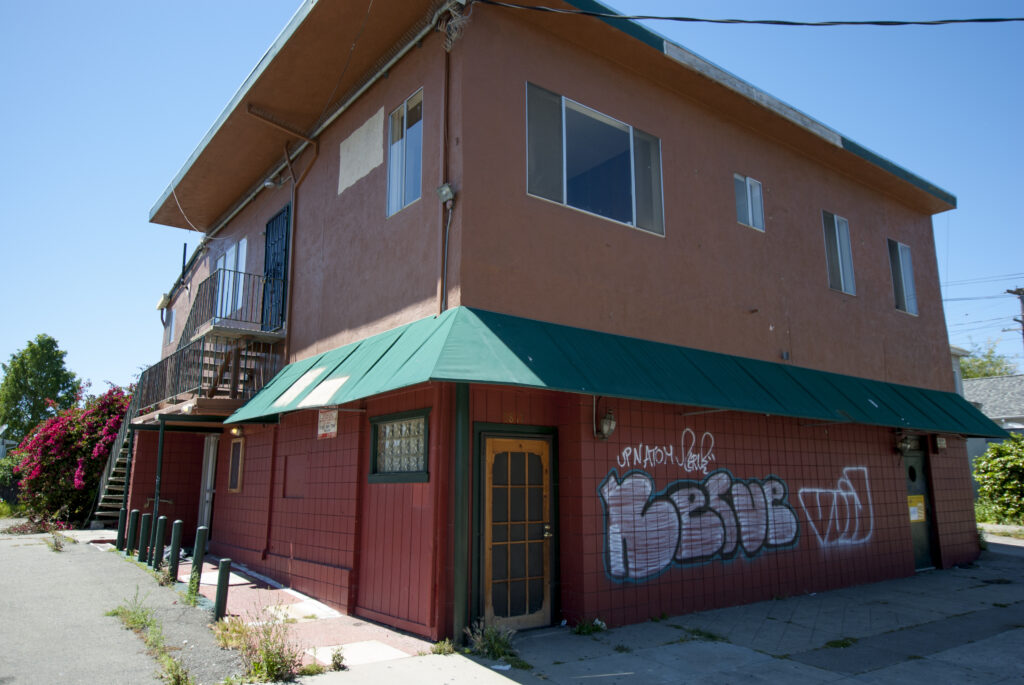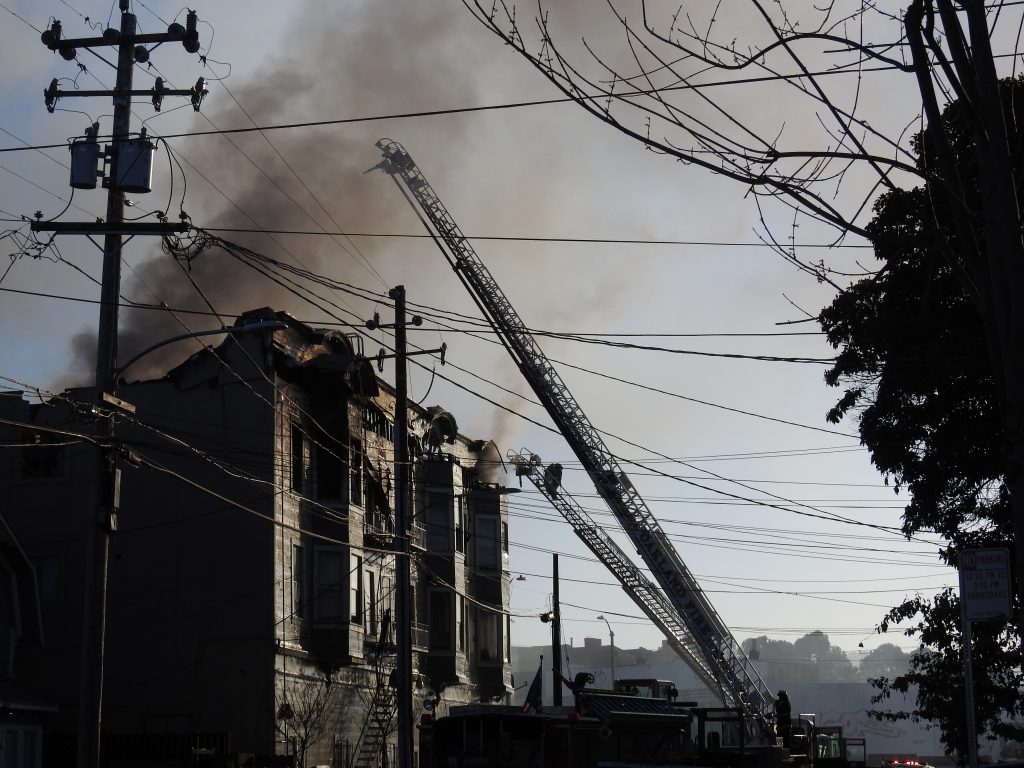On Saturday, efforts to remove contaminated soil and groundwater at a former chemical facility in West Oakland began — two decades after the problem was discovered. The cleanup is in its first phase, but proposed federal budget cuts might stall subsequent work at the site.
Over the weekend, environmental activists and officials from the Environmental Protection Agency activated equipment at the former AMCO plant near Mandela Parkway and Third Street. This phase of the cleanup could last until the end of the year.
The system uses buried electrodes to heat the soil and vaporize the groundwater and contaminants. The vapor is then captured and separated into air, water and chemicals that are removed for disposal; the filtered air and water are released.

The contamination was discovered in 1995 when workers smelled strong chemical odors while digging in the area. At the time, the site was a scrap yard, but it was operated by AMCO from the 1960s until 1989.
Bulk chemicals brought in by rail were off-loaded and stored in drums and storage tanks before they were transferred to smaller containers. All of the tanks were removed when AMCO stopped using the property. Today, the area is a Superfund site — part of a long-term program to clean up the nation’s most-polluted areas.
Federal EPA officials attempted to clean up the site in 1997, but work was halted after area residents grew concerned that EPA was incinerating the soil.
Although the agency determined that there was no immediate threat to surrounding residents, it discontinued the practice because the “community’s concerns were important,” an official told The Chronicle in 1998.

The current treatment plan won the support of community environmental activists, including Bradley Angel of Green Action, which opposed the use of the incinerator in 1998.
“This seems to be the safest way to deal with this,” Angel said, adding that the community’s relationship with the EPA has “transformed” over the last two decades.
While the AMCO site is Oakland’s only Superfund location, underground contamination is a problem throughout the city. The state Water Resources Control Board identifies dozens of leaking underground storage tank sites throughout West Oakland.
“This is one of many,” said Margaret Gordon of the West Oakland Environmental Indicators Project, pointing out there are more than 50 cleanup sites scattered across Oakland.
Superfund sites are “the worst of the worst” based on a ranking of the potential hazards, said EPA project manager Kelly Manheimer. The West Oakland project competed for funding with as many as 20 other sites that were ready to begin cleanup.
It’s taken about six months to install the specialized equipment and this phase of the cleanup will take up to 10 months. After that, they will sample the soil and consider next steps, Manheimer said. Some chemicals likely can’t heat up enough for the technology to remove them, so a second cleanup phase will be necessary.
Under President Donald Trump’s proposed budget, the EPA faces up to a 31 percent cut, which could reduce money for Superfund projects. If cuts are enacted, it’s unclear whether the next phase of the West Oakland cleanup can proceed.


